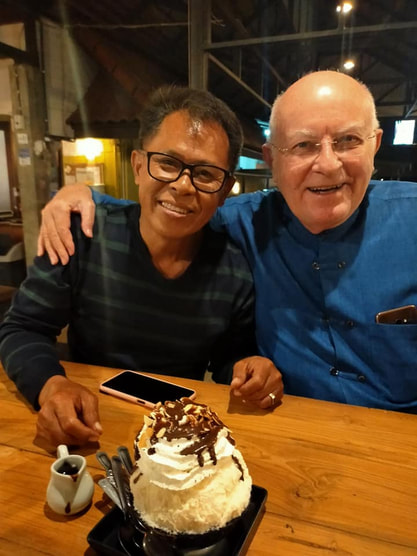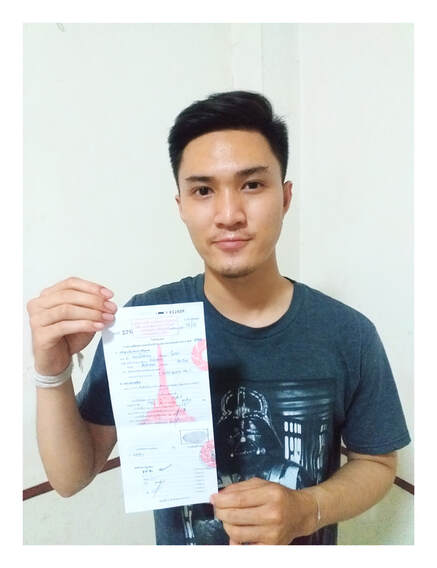|
“It’s gotten harder to talk to people across lines of significant disagreement.”
I read this and took note of it some time ago, probably during the riots and protests that followed the murder of Floyd George about a year ago. But it was a thought that has been troubling me for years, ever since beginning to try to get a handle on post-modernism. There are three factors that disrupt open dialogue, and they have expanded in the last half century: · Societal polarization As RW Caves said in Encyclopedia of the City (2004): Social polarization is associated with the segregation within a society that may emerge from income inequality, real-estate fluctuations, economic displacements etc. and result in such differentiation that would consist of various social groups, from high-income to low-income. It is a state and/or a tendency denoting the growth of groups at the extremities of the social hierarchy and the parallel shrinking of groups around its middle. · Social media echo chambers In discussions of news media, an echo chamber refers to situations in which beliefs are amplified or reinforced by communication and repetition inside a closed system and insulated from rebuttal. By participating in an echo chamber, people are able to seek out information that reinforces their existing views without encountering opposing views, potentially resulting in an unintended exercise in confirmation bias. Echo chambers may increase social and political polarization and extremism. · Coarseness of our political discourse For many reasons, some commercial and some ideological, political discourse has grown aggressive, reluctant to entertain actual debate, and uncivil. I will now reminisce about how I have perceived this decline from my perspective as a pastor from 1965 to 2003 when I officially retired. I thought it was my role to reconcile differences whenever possible. I was the neutral ground, the quiet eye in the middle of the storm, the bridge over troubled waters, as well as the watchman on the tower. In church terms, I was the pastoral-shepherd as well as the prophetic leader. It was a precarious tightrope act where I was to calm things down as well as sound the alarm and stir things up. Even though our church communities were homogeneous and without significant diversity, I thought of myself as one who was in charge of holding open the possibility of diversity. Indeed, I was to advocate its desirability. I did this by identifying metaphors we already had as well as telling stories from beyond the borders of our experience and outside our comfort zone. We gathered as friends and nestled within our familiar womb of sound and ceremony, which kept us safe from imminent incursions and occasionally drew us back from insurrections outside. As long as we were inside, we were safe and could bear to imagine realities that were alien and would be challenging, such as how nice it would be to have world peace. It is now almost 20 years since my retirement and I am filtering second-hand information to conclude, “It’s not like that anymore.” There must be many congregations in which diversity in some of its manifestations is such a threat that its possibility is unwelcome. Since diversity comes in many forms, maybe some of them are advocated, while others are outside the pale. Times change. When I was a boy a mixed-marriage was a Roman Catholic married a Protestant. Now the big issue is when two women or two men marry. Isn’t that the opposite of a mixed-marriage? When I was in seminary I worked in two churches. One was all white and afraid of neighborhood change that would disrupt life as they had constructed it. The other was in a changing neighborhood where the church was one of the change agents. As I hear it, the things they are afraid of are different now (basically opposite from what they had been 50 years ago) and the levels of fear are ratcheted way up. Pastors these days cannot expect to bring about changes of attitudes, no matter what they say or how they say it. Attitudes about society are fixed by other voices. Lines of debate about that are severed. In fact, that is also true of congregations that are advocating diversity, where their banners announce YOU ARE WELCOME in rainbow colors. They have moved beyond discourse about many topics as well. They love free speech except when it advocates hatred. (That seems reasonable to me, except that the hatred is beyond discussion. At least it cannot be discussed with the ones doing the hating. And that hating is selective.) What’s a pastor to do these days? Many pastors, I take it from what they say on social media, are chaplains now. Their audiences are winnowed down to those who are agreeable to congregate. They have decided how society should be, so that’s settled. They have decided how to deal with discordant sounds about such matters. Even if a pastor tries to challenge the congregation, the message is tolerated and the challenge is ignored. So the chaplains preside at religious events, adorned with religious accoutrements, to dispense what comfort is possible under the circumstances. It's a valuable role, but it is not really conciliatory. If this applied only to pastors I’d refrain from repeating what has already been said. But the ruination of civil discourse is not limited to churches. All units of society, in all societies around the world that are connected by worldwide communication networks … all of them are breaking down into units that abide no disagreement. I am worried about civilization when discourse is prevented. It’s not always “media” that are to blame. In Burma there has been a coup that basically resulted in order to prevent political discourse by arresting the democratically elected leader Aung Sun Su Kyi and thousands of others.* In Russia and China social media criticism of the leaders is being shut down. Democratic forms in Hong Kong have been crushed. Today the government in India announced the end of any critique of the way it is handling COVID. Authoritarianism cannot stand discourse, but tyrannies always self-destruct, taking vast numbers of people along with them. When civil discourse ends, eventually civilization ends. It happens at the micro as well as the macro level of society. This morning as I type this, I am concerned about a relative who has withdrawn from all contacts. She threatened to do this in order to preserve her peace of mind from what she saw as attacks, and now she has done it. She is a very social person. Her retreat is worrisome. Today, another relative posted: “BLM is now known as burn, loot and murder.” I think she’s crossed the line. I never imagined I could influence her, but I’m wondering if it’s worth keeping in touch with her since the gulf between us has no bridge, except that we’re cousins. * The photo accompanying this essay is of gay men coming out of the closet and into the street to oppose the military in Burma. It is a brave thing they are doing.
0 Comments
Two descriptions of the condition of institutional religion in the USA came this week. They describe conditions separated by more than a century. I am in love with the expressive excellence of both descriptions so I cannot resist providing them at length.
John Steinbeck portrays the establishment of Christian churches at the time settlements were being made. He calls all the churches sects. I’d prefer he called them denominations, but both terms are only partly accurate. Steinbeck tries to be realistic with his faint praise barely avoiding damnation: The sects fought evil, true enough, but they also fought each other with a fine lustiness. They fought at the turn of a doctrine. Each happily believed all the others were bound for hell in a basket. And each for all its bumptiousness brought with it the same thing: the Scripture on which our ethics, our art and poetry, and our relationships are built. It took a smart man to know where the difference lay between the sects, but anyone could see what they had in common. And they brought music—maybe not the best, but the form and sense of it. And they brought conscience, or, rather, nudged the dozing conscience. They were not pure, but they had a potential for purity, like a soiled white shirt. And any man could make something pretty fine of it within himself. …The honest preachers had energy and go. They fought the devil, no hold barred, boots and eye-gouging permitted. You might get the idea that they howled truth and beauty the way a seal bites out the National Anthem on a row of circus horns. But some of the truth and beauty remained, and the anthem was recognizable. The sects did more than this, though. They built the structure of social life. (p. 257- 258) The second quote was elicited as part of the build-up to a documentary coming soon, Martin Doblmeier's new film, Spiritual Audacity: The Abraham Joshua Heschel Story. Heschel wrote: “It is customary to blame secular science and anti-religious philosophy for the eclipse of religion in modern society. It would be more honest to blame religion for its own defeats. Religion declined not because it was refuted, but because it became irrelevant, dull, oppressive, insipid. When faith is completely replaced by creed, worship by discipline, love by habit; when the crisis of today is ignored because of the splendor of the past; when faith becomes an heirloom rather than a living fountain; when religion speaks only in the name of authority rather than with the voice of compassion—its message becomes meaningless.” Both Steinbeck and Heschel were writing almost at the same time, but Steinbeck captures a time-bound past before churches reached their peak of splendor. Herschel wrote sagely about religion in America in a way that has remained soberingly relevant, especially this week when we saw a report that American people’s membership in religious organizations has dropped below 50% for the first time in the history of keeping records. The sects, “built the structure of social life” as towns sprang up, Steinbeck says. The churches were social centers and models for social order. They were relevant despite their inadequacies and underdevelopment. Then the religious “sects” developed and built, and did so gloriously, long past the time when splendor and vast buildings were actually needed. Herschel brooded, “when the crisis of today is ignored because of the splendor of the past … its message becomes meaningless.” That is where we are as religious people in the USA and many, many other countries. When institutions become irrelevant they become meaningless. Their message becomes meaningless as it is disconnected from their actions. Their actions are irrelevant when they no longer respond to what’s going on with a vivid vision of the future and build a path to realize it. When there is nothing to care about, people stop caring. [References: John Steinbeck, East of Eden. 1952. Abraham Joshua Heschel, God in Search of Man: A Philosophy of Judaism. 1955.] “How are you?” they ask, not meaning we should actually explain much about our well-being. “Fine,” we respond, either wanting to get beyond polite social small-talk or to cut off the conversation. But reality is complex. We may not feel “fine” at all, or we may feel “fine” unrealistically. Our most common gloss, however, is to let some negative aspect of our circumstances define our whole condition.
Our sense of well-being is often unfairly diminished by our current condition. For instance, a toothache can eclipse everything else. A financial loss can make one suicidal. Winter doldrums can lead to debilitating depression. On the other hand a spate of good fortune can divert attention from one’s chronic illness or conflict with relatives. Success at sports can offset a student’s stumbling grades in academic subjects. It is helpful, from time to time, to take a more holistic look at ones condition and try to put the current “big issue” into perspective. WHAT CONSTITUTES WELL-BEING? There are several factors that contribute to one’s sense of well-being. Consider these four: social (family/community), emotional (happiness/balance), one’s primary role (gauged by security and accomplishment), and physical (health/sexual fulfillment). I have devised a simple test to calculate these factors: Test of Well-being In answering the following 8 questions use this scale 0 to 5: 0 none at all, zero 1 very little, hardly any 2 a barely significant amount 3 an OK level, tolerable, usually satisfactory and acceptable 4 a great deal, quite a lot 5 very much, maximum amount that is likely 1. Social satisfaction: Question 1: on a scale of 0 to 5, how much ENERGY (effort, time, concern) do you spend handling your family and community interests and requirements? Question 2: on a scale of 0 to 5, how much SATISFACTION (fulfillment, rewards) do you feel you derive from your family and community connections and involvement? 2. Emotional satisfaction: Question 3: on a scale of 0 to 5, how much ENERGY (effort, time, concern) do you expend on your emotional life (your happiness, mental health, balance)? Question 4: on a scale of 0 to 5, how much SATISFACTION do you feel you derive from the effort you are spending on your emotional welfare (how is that working for you)? 3. Satisfaction regarding your main role in life: Question 5: on a scale of 0 to 5, how much ENERGY (effort, time, concern) do you put into your security and accomplishment as a productive person (e.g. as a professional, worker, student, parent – your main role at present)? Question 6: on a scale of 0 to 5, how much SATISFACTION does this role provide for you? 4. Physical satisfaction: Question 7: on a scale of 0 to 5, how much ENERGY (effort, time, concern) do you feel you are expending on your physical well-being (health, sexual, and nutritional aspects of life)? Question 8: on a scale of 0 to 5, how much SATISFACTION do you get from your physical condition as it is (how do you feel about the results of your efforts to provide for your physical and sexual well-being)? Assessing the results of this inventory: A. There are 4 ENERGY scores which indicate your levels of stress or concern about that factor of your well-being. Assign those scores with a minus. Energy spent is the cost of satisfaction. B. There are 5 SATISFACTION scores which indicate your sense that things in that area are positive. Assign those scores with a plus. This satisfaction is how much that effort was worthwhile. C. Calculate the 4 minuses and the 4 plusses to arrive at a satisfaction score. Your overall satisfaction rating will be somewhere on a continuum between -20 and +20. For simplicity’s sake, let’s say any score lower than -10 indicates a serious sense of concern, whereas a score of more that +10 is an indication of celebration. The great majority of us will, at any one time, be feeling our well-being is somewhere in the middle, between -10 and +10. D. Remember, these scores fluctuate all the time. ---------- Despite our tendency to blame factors beyond our control, well-being is our own sense of how things are. The conclusion we draw is our own internal calculation or miscalculation. This is not to dismiss the fact that circumstances do make an impact. For instance, being evicted, expelled, or attacked are real. But how those impact our sense of well-being, is not always all about those circumstances. “I’m a victim,” “I can’t control my attitudes,” or “I live in a messed-up world,” would not be all that needs to be said about one’s well-being. Imagine you are anxious about how your retirement savings are going to run out. This tends to become a consuming worry. If you took time to factor it into a holistic picture you’d have a more realistic assessment. Your answers to the 8 questions and the resulting scores might look like this: 1. Family is most important. I give it a lot of energy. Energy spent is -4 2. Family is most important. They are the love of my life. Satisfaction is +5 3. I’m OK emotionally. I needn’t work at it very hard. Energy spent is -2 4. I’m OK emotionally. I am essentially quite happy. Satisfaction is +4 5. I planned my security wrong. I’m panicking. Energy spent is -4. 6. My retirement savings are gone. My worry isn’t working. Satisfaction is +0. 7. My health is good. I work at it. Energy spent is -3 8. I am energetic and fine. This is one worry I don’t have. Satisfaction is +5 You, despite your retirement worries, have an overall lack of concern about well-being. It is a level of +1 on a scale of -20 to +20, right in the middle of a bell-shaped curve. Imagine two people have cancer. Why might one of them have a very negative sense of overall well-being while the other feels not-so-bad? Both patients are expending a very great deal of energy (almost all they have, -5) confronting their condition and they both feel they are not yet getting best results. Their score of benefits is only +1. In both cases the physical score is low (-4). Their well-being score, however, includes three other factors. Patient A has no financial worries nor job concerns (+4 for what we are calling “role satisfaction”), and the patient has to expend very little effort at maintaining that level of security (-0) = +4. Patient B is going to be bankrupted by this medical crisis (no “satisfaction” about security (+0) while devoting all sorts of effort to getting ready to handle this (-4 – a high sense of effort expended) = -4 score regarding the patient's sense of getting benefit from their main role in life right now. Patient A is a recluse and has little sense of social standing or community esteem and so concludes that’s worth about +2, but A doesn’t put much effort into it anymore (so the expended effort is “hardly any” for -1). Patient B, on the other hand, has been almost overcome with community and family support during this medical crisis (+4 for question 2), while having a sense of not contributing very much towards the community and family at present (-1). That is benefits +4 over effort -1 for a social satisfaction score of +3. As for emotional satisfaction, as hospital patients, they are needing to work rather hard to maintain their balance, so their energy and benefit from their effort cancel each other out (+3 and -3 = 0). Patient A’s overall sense of well-being, looked at holistically, is -4, +4, +1, and 0. Patient B’s overall sense of well-being is -4, -4, +4, and 0. As of today A is doing better than B. Notice, it is not one factor (wealth, social support, emotional balance, or medical condition) that makes a difference in their sense of well-being, but their concern about these things. In fact, A’s financial reality might be dire without A knowing it. B might be about to learn that insurance is going to cover this and the present worry is going to go away. Hard reality is one thing, but a sense of well-being is what motivates us. Conclusion: One’s sense of well-being may swing quickly, but it is the intuitive engine that tends to drive one’s action. The strength and duration of the sense of well-being are what determine the intensity of energy allocated to action. The goal of the action, of every one of our actions, is to enhance our sense of well-being. A basic human need is a sense of well-being The main rite of passage into adulthood for Thai young men is the military lottery that comes after their 21st birthday. Every April, all over the country, all 21 year-olds are assembled in their home district to be sorted. It is a tense and emotional experience.
Yesterday was the big day for our nephew, Wave, and about 100 other boys becoming men in our district. First they are “examined” to see if they are fit for military service. Most pass. Then they are given a chance to volunteer. The military has already announced how many recruits they need. They wanted 73. Thirty volunteered. That meant another 43 would be drafted from the remaining 73 eligible males. The process is decades old. 43 red slips in capsules were put into a container along with 30 black slips. (They used to be colored balls.) The guys were called forward one village at a time, and one by one they pulled a ball from the container. If the capsule contained a red slip they were in the army for a year or two, but if the slip was black they were given an exemption form and they were free from military service for the rest of their life. Nephew Wave was one of the lucky ones. He pulled a black slip out of the container. He said he’d not been nervous until it actually came close to his turn, but his hand was shaking. There were two 21 year-olds from his village. The other guy drew a red slip and nearly fainted. Relatives were gathered in bleachers around the arena, and there was cheering and wailing as each slip was announced. Wave came home with his exemption paper, I took his picture with it and we had a nice cook-out to celebrate. What we were celebrating, of course, was not just his escape from jeopardy as a soldier. Plans had already been made with relatives in the Army to get Wave assigned close to home. It helps to know people. We were celebrating Wave’s formal passage into full-fledged adulthood, citizenship, and social status. There are three widely accepted rites. In addition to the draft lottery which is the big one, getting a diploma marking the end of formal education and getting formally married with relatives of both the bride and groom tying cords of blessing around the couple’s wrists (which is done on other occasions as well) are the other two. Earlier in the week Wave’s class graduated from vocational school. So, for Wave he was 2 for 3. It could be that he and his live-in girlfriend will now "tie the know" to complete the set. Young women have rites of passage, too, in Thai society. They can also get a diploma from a vocational or academic institution and enter the ranks of the gainfully employed. Commencement ceremonies are very important and convincing rites of passage for them. They can get married. If they have a baby, that is a powerful signal. I noticed that at the very time Wave was in the arena yesterday morning, his cousin posted an announcement online to the effect, “I am proud to be independently sufficient and to be raising two children.” Of course, she and her husband are doing this together with a lot of help from extended family, as this is done in Thailand, but she was announcing the truth, she has passed well and truly into adulthood, and she’s proud. That’s how it’s done here. |
AuthorRev. Dr. Kenneth Dobson posts his weekly reflections on this blog. Archives
March 2024
Categories |
| Ken Dobson's Queer Ruminations from Thailand |
|




 RSS Feed
RSS Feed
